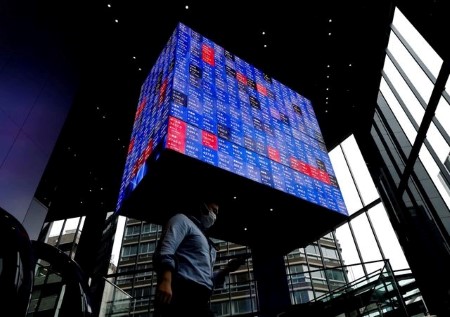




Monthly Economic Update: One for the road
 DOWNLOAD
DOWNLOAD

Inflation Update: Still low, still slow
 DOWNLOAD
DOWNLOAD

Philippines Trade Update: Exports momentum continues
 DOWNLOAD
DOWNLOAD


Asian stocks rise with crude amid China optimism before holiday

TOKYO, Jan 20 (Reuters) – Asian equity markets and crude oil rose on Friday amid optimism about China’s reopening following the lifting of stringent COVID curbs, as markets prepared for the Lunar New Year holidays.
At the same time, the US dollar edged up from near its weakest since May and Treasury yields were elevated as investors weighed the outlook for further Federal Reserve policy tightening and the associated risks of a global recession.
Japanese government bond yields stayed depressed, two days after the Bank of Japan defied investor pressure to loosen yield curve controls further.
Hong Kong’s Hang Seng rallied 1.5%, and mainland blue chips were 0.57% firmer.
Japan’s Nikkei added 0.56%, helped by a retreat in the yen. South Korea’s KOSPI gained 0.63%, reversing an earlier loss, and Australia’s benchmark edged 0.23% higher.
Asian markets rose despite a selloff on Wall Street overnight, with the S&P 500 losing 0.76%. E-Mini futures EScv1 indicated a small bounce at the reopen though, gaining 0.2%.
German DAX futures gained 0.47% and FTSE futures rose 0.48%.
Chinese Vice Premier Sun Chunlan, who oversees the country’s virus response, said the outbreak was at a “relatively low” level, state media reported late on Thursday, ahead of a mass migration of people for the week-long Lunar New Year holiday.
Sentiment improved from the Wall Street session, when investor worries about more Fed tightening were heightened by robust US employment data and fresh hawkish rhetoric from central bank officials.
Weekly jobless claims were lower than expected, pointing to a tight labour market.
Boston Fed President Susan Collins said the central bank would probably need to raise rates to “just above” 5%, then hold them there, while Fed Vice Chair Lael Brainard said that despite the recent moderation in inflation, it remains high and “policy will need to be sufficiently restrictive for some time”.
Those comments by “usually reliable Fed dove” Brainard in particular are “compounding rate hike fears,” said Tony Sycamore, an analyst at IG.
“The labour market is just a little too hot to back off,” Sycamore added.
The market expects the policy rate will be just below 5% in June, implying just over 50 basis points of additional tightening.
“I’d argue the market has moved on, feeling confident we’re close to an end in the hiking cycle and the debate – certainly in the US – is whether the Fed will start to cut from Q3,” Chris Weston, head of research at Pepperstone, wrote in a note. “USD remains heavy (but) clients are not convinced and the skew in positioning is for the USD to bounce.”
The dollar index – which measures the greenback against six peers, including the euro and yen – edged 0.14% higher to 102.17, adding a bit more distance from the 7-1/2-month low of 101.51 reached on Wednesday.
The benchmark 10-year Treasury yield was around 3.415% after bouncing off the lowest since mid-September at 3.321% overnight.
Equivalent JGB yields slipped half a basis point to 0.4%, hovering around that level since getting knocked back from above the BOJ’s 0.5% policy ceiling on Wednesday, when the central bank refrained from further tweaks to its yield curve controls.
Elsewhere, crude oil prices continued to rise. Brent futures for March delivery gained 30 cents, or 0.35%, to USD 86.46 a barrel, while US crude advanced 49 cents to USD 80.82 per barrel, a 0.6% gain.
(Reporting by Kevin Buckland; Editing by Jacqueline Wong)
This article originally appeared on reuters.com





 By Reuters
By Reuters